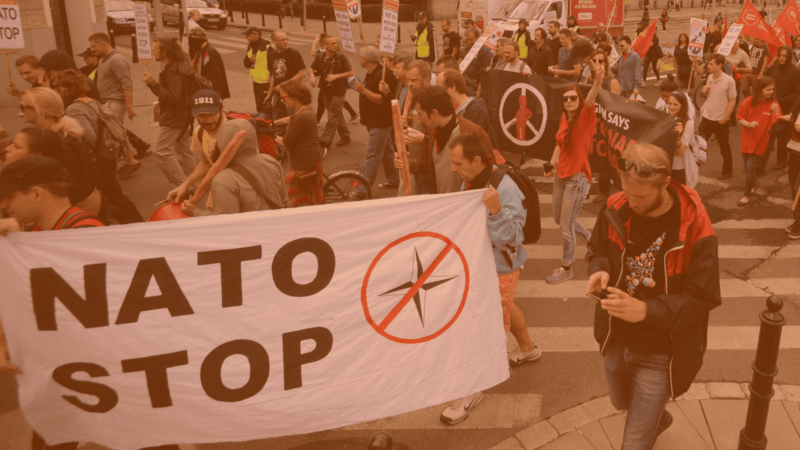On the government crisis and the real needs of Italian citizens
The reckless government crisis in the midst of the pandemic, which seemed to have been overcome only a week ago after the vote of confidence, was formally opened on 26 January with the resignation presented by Prime Minister Conte to the President of the Republic. For us at DiEM25, the priorities remain those that weigh most heavily on the lives of citizens; they are the ones that should mobilise the country’s resources, energies and intelligence. But currently, many are discouraged by the lack of farsightedness and responsibility of politics towards the gravity of the situation.
Health
We are still in the midst of a pandemic. Nevertheless, Italy — compared to other countries in Europe — has started well in its vaccination campaign, maintaining a good number of daily administrations, which has placed it at the top places in Europe. However, it has recently suffered the slowdown imposed by Pfizer.
As Italian citizens, we absolutely cannot afford to let our guard down when it comes to our health. An even greater effort has been required of our doctors, nurses and all healthcare staff on a daily basis (it is they who carry the greatest emotional burden and human fatigue). We are all tired of intermittent restrictions, of rules that do not allow us to have the kind of human and social close and friendly relations for which we, Italians in particular, are known for and which we cannot do without. But breaking from COVID-19 measures now as suggested by right wing forces would jeopardise all the work done so far.
All front-line staff should be granted a one-off bonus in order to show gratitude and appreciation for their exceptional effort against this terrible pandemic. But this is not enough, the government also needs to ensure the prospect of stable recruitment, which can put an end to the precariousness created by cuts to public health, which — according to the Gimbe Report — have resulted in the defunding of the National Health Service to the tune of €37 billion in the decade 2010-2019.
However, it should be emphasised that the priority focus on public health does not in any way support Renzi’s axiom of the need to use the pandemic crisis support of the European Stability Mechanism. This is essentially for three reasons. Firstly, being the only European country to activate such a mechanism, we would risk paying for it in terms of a “stigma” effect through the inflexible “market discipline”, as soon as the ECB were to abandon its accommodating policies and return to the “capital key” rule. Secondly, the strong conditionalities of the ESM are provided for by its statute, which has not changed. Thirdly, investments in public health — many studies have shown this — have a positive impact in terms of lower future spending in health as well as in collective welfare, offsetting over time the burden on public finances. Ultimately, we do not know whether the 19.7 billion allocated to health in the second draft of the “Next Generation Italy” is sufficient, but we do know that it is a necessary reversal of course compared to the past, from which territorial health and personnel must benefit.
School
Although, much has been done, there is still a lot more to do, and it could be done in a much better way. Now, it is time to join forces and concentrate on solving a number of problems to ensure that all students return to class, which, at least for this year, will be affected by COVID-19 measures. Therefore, several actions must be taken, such as:
- Upgrading the connectivity of all schools
- Renovating and making school spaces healthy in order to reduce ‘henhouse classes’
- Retrofitting for energy efficiency school building
- Wiring all school buildings to improve connectivity
- Hiring teachers and making schools more energy efficient
- Encouraging active teaching that is open to the local territory, promoting cultural extracurricular activities that strengthen the link between school and citizenship
These are all investments that would remain with the schools and the communities they belong to, even after the pandemic.
In addition, transportation needs to be improved and a 100% secure back-to-class plan needs to be devised as soon as the course of the virus allows. Such measures would be a form of compensation for all the students who have been left behind in recent months and for the normality taken from the lives of so many young people. Not making the mistake of non-priority expenditures (such as the purchase of rolling desks) is the least we can promise to our children. The 27.9 billion for “Education and research” — one of the six missions of “Next Generation Italy” in the second draft — should be properly invested for the benefit of future generations, especially for the component intended for “strengthening the skills and the right to study.
Work
The pandemic and the measures put into place have left many atypical, intermittent and informal workers in this country without protection. By March, we risk more than a million newly unemployed people, as well as business closures and bankruptcies. It will take years to bring Italy back in balance, and this can only happen with a huge flow of public investment to ensure that the recovery is neither too slow nor too delayed.
The second draft of the “Next Generation Italy” allocates a total of 6.7 billion euro to ‘labour policies’, within the mission called ‘Inclusion and Cohesion’. This is perhaps not enough to repair a female employment rate shamefully far from the European average and an unemployment rate, especially among young people, that is too high — weighed down by the year-on-year decrease in employment (- 390 k) and the increase in NEET (+479 k)s, equal to -869 thousand units, according to the latest ISTAT press release.
Digitalisation
Digitalisation: together with ecological transition, it is one of the main strategic priorities of policies agreed at European level. The allocation for digitalisation — of the Public Administration and the production system respectively — is 11.3 billion and 26.6 billion in Next Generation Italy. This is a mountain of money. It will therefore be crucial to allocate these resources to projects that are actually useful for the country’s development.
This crisis has increased social and territorial inequalities; the gap between the two is likely to be ever wider. We can already see how the gap is huge in the south in terms of beds, vaccines available per region and per capita public spending on businesses and families. Digitalisation will therefore increasingly become one of the key words to monitor and control the quality of spending and to stimulate local authorities to carry out their programmes, through the transparent tracking of public spending.
There is a huge amount of work to be done, and we are already starting out weakened by a policy that does not seem up to the severity of the current crisis. But as Brian Eno — member of the DiEM25 Advisory Panel — said, ‘even if there is no recipe, it is important to start cooking, only then will the dish take shape’.
This piece was authored by Patrizia Pozzo, a member of the DiEM25 Coordination Collective, and Antonella Trocino, a member of the DiEM25 National Collective.
Photo Source: Photo by Antonella Trocino.
Do you want to be informed of DiEM25's actions? Sign up here















